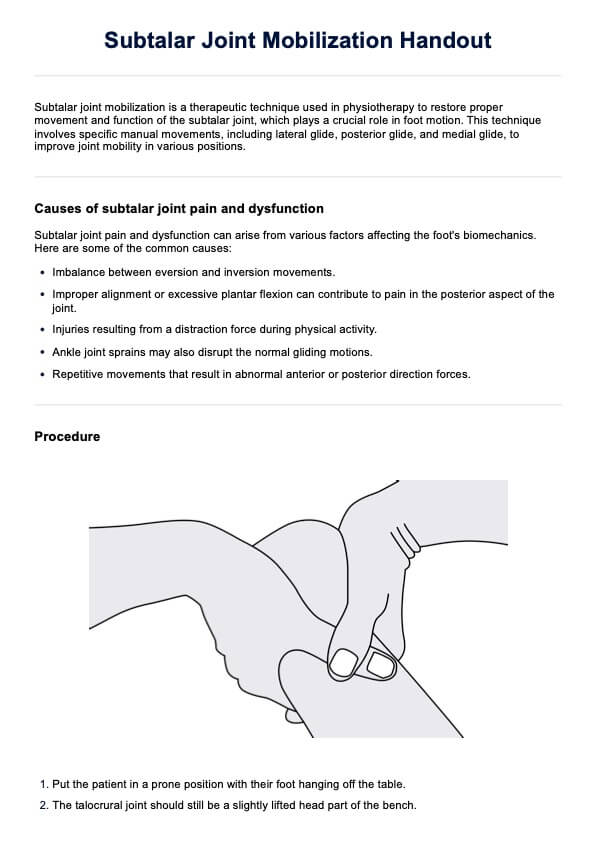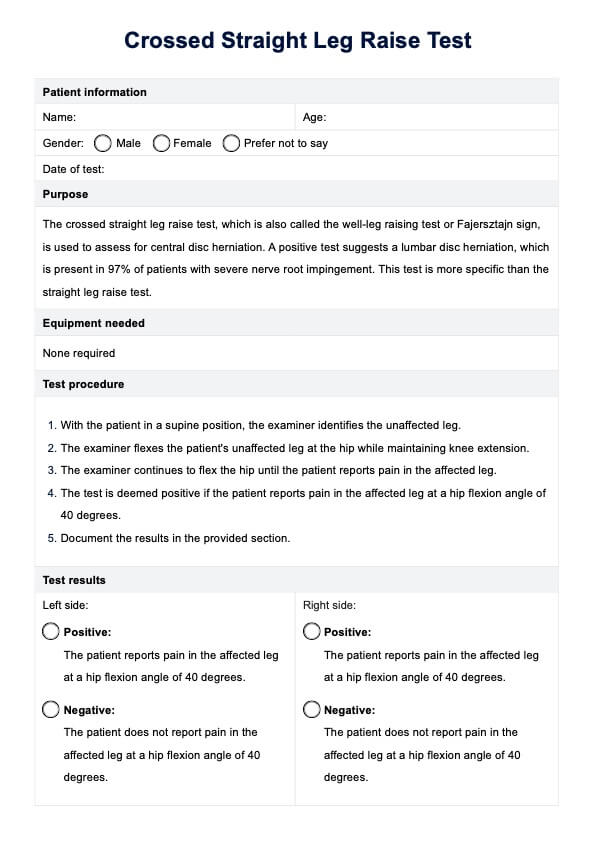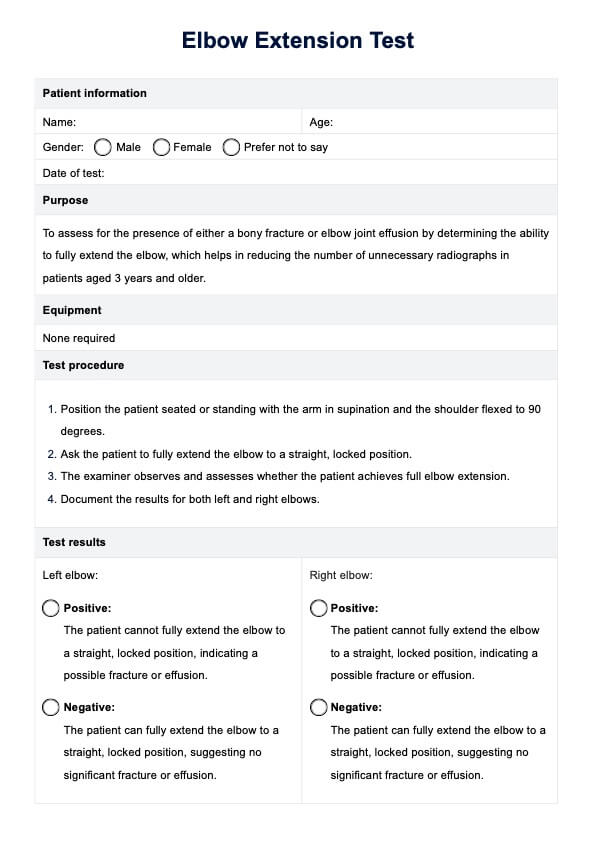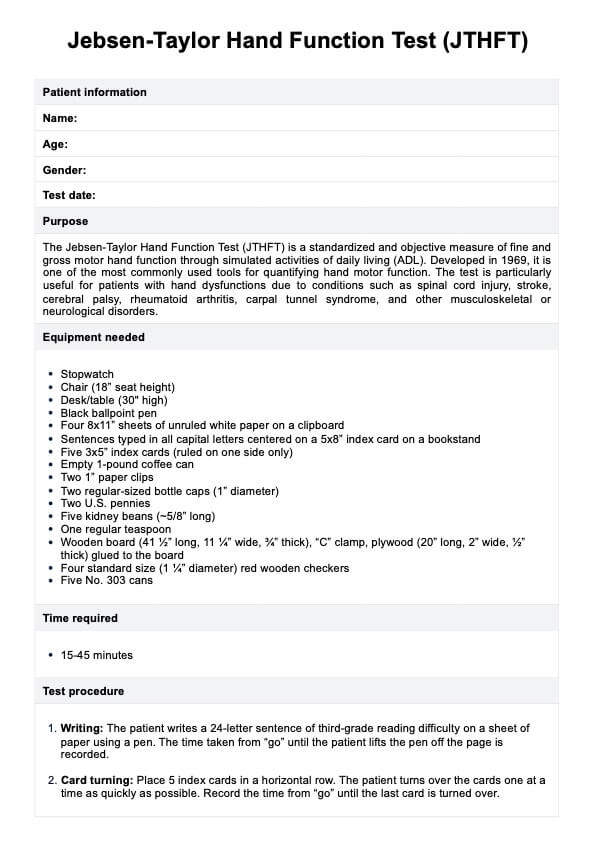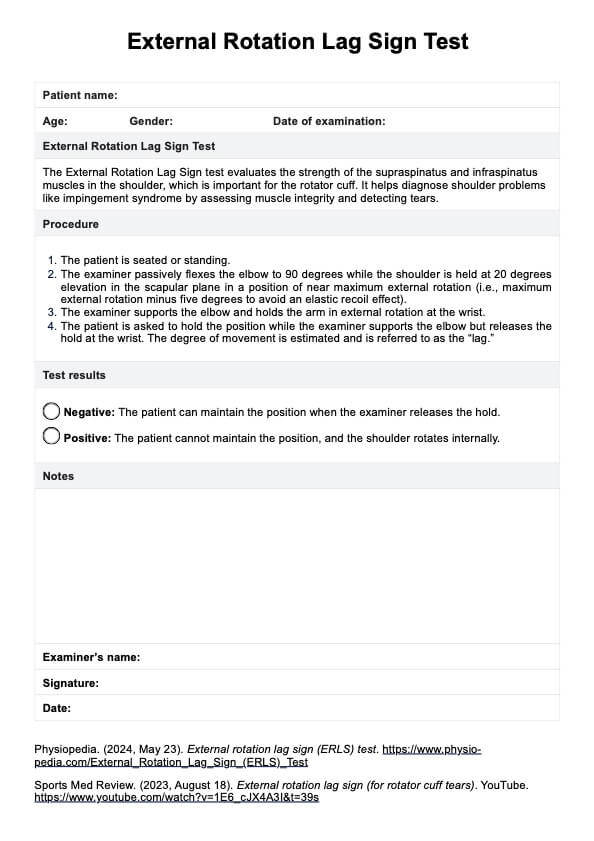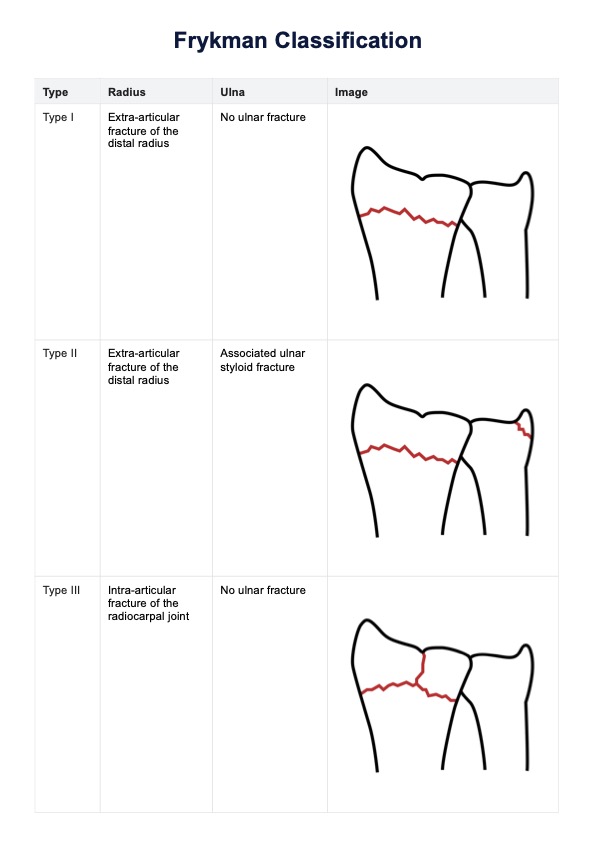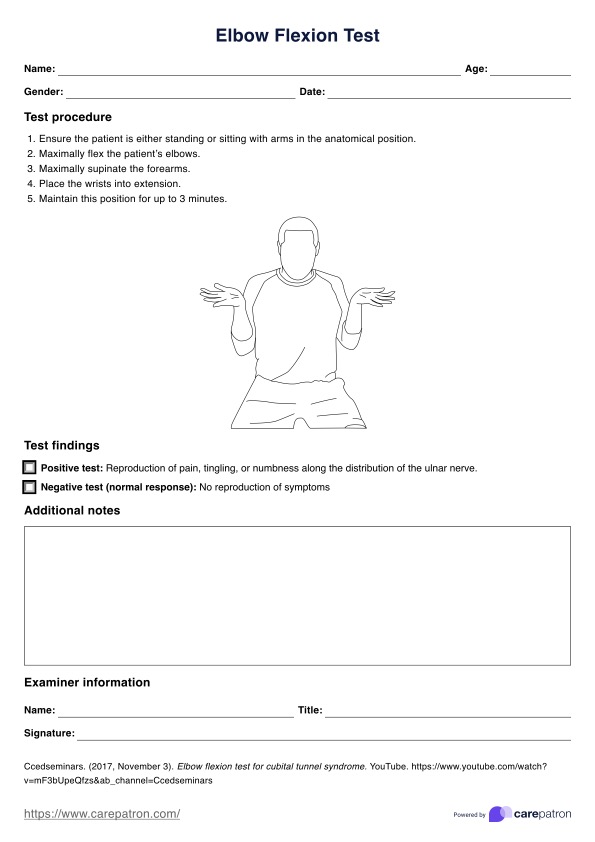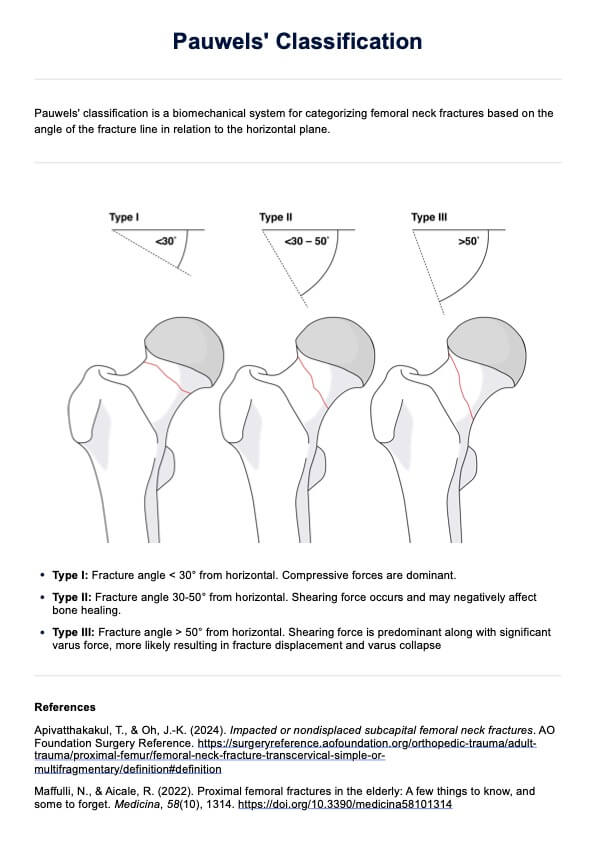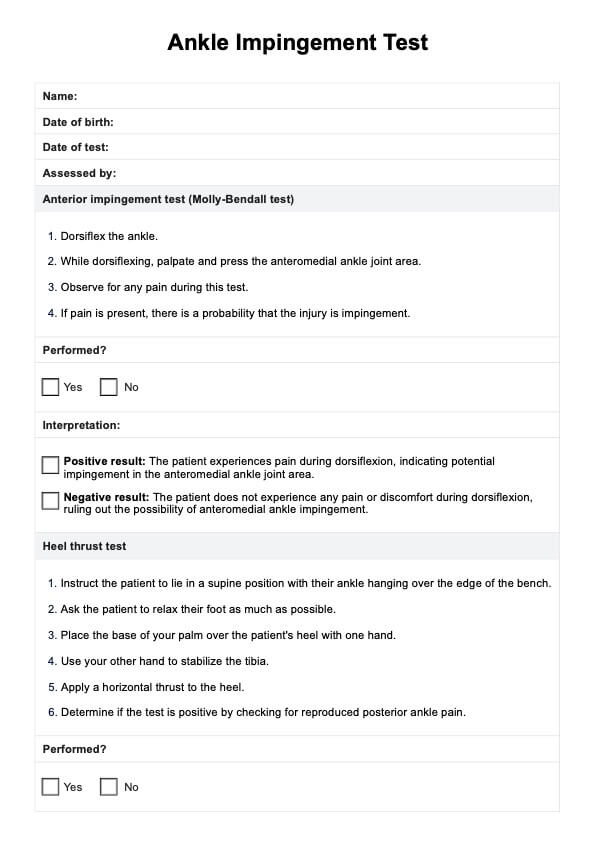Subtalar Joint Mobilization Handout
Discover the benefits of subtalar joint mobilization and learn about the technique with Carepatron's PDF download. Improve your practice today.


What are the usual causes of subtalar joint pain and dysfunction?
Subtalar joint pain and dysfunction can arise from various factors affecting the foot's biomechanics. One common cause is an imbalance between eversion and inversion movements, leading to excessive strain on the subtalar joint.
Additionally, improper alignment or excessive plantar flexion can contribute to pain in the posterior aspect of the joint. Injuries resulting from a distraction force during physical activity can cause inflammation and dysfunction. Conditions like ankle joint sprains may also disrupt the normal gliding motions—such as lateral glide, posterior glide, and subtalar medial glide—affecting joint stability and mobility.
Dysfunction can further be attributed to repetitive movements that result in abnormal anterior or posterior direction forces, leading to chronic discomfort. Understanding these causes is essential for implementing effective treatment strategies like subtalar joint mobilization, which can restore proper function and alleviate pain through targeted movements and adjustments.
What problems can subtalar joint pain and dysfunction cause?
Untreated subtalar joint pain and dysfunction can lead to significant problems, including permanent foot damage. As the joint deteriorates, individuals may experience increased pain, redness, swelling, and bruising, which can severely affect mobility. The dysfunction can also compromise balance and stability, making it challenging to perform everyday activities such as walking or standing.
Subtalar Joint Mobilization Handout Template
Subtalar Joint Mobilization Handout Example
What is subtalar joint mobilization?
Subtalar joint mobilization is a therapeutic technique used in physiotherapy to restore proper movement and function of the subtalar joint, which plays a crucial role in foot motion. This technique involves specific manual movements, including lateral glide, posterior glide, and medial glide, to improve joint mobility in various positions. By facilitating motion in the anterior direction and enhancing eversion and dorsiflexion capabilities, subtalar joint mobilization helps alleviate pain and dysfunction in the ankle joint.
How do physical therapists perform this?
Physical therapists perform subtalar joint mobilization by first positioning the patient in a prone position, allowing the foot to hang off the edge of the treatment table. The talocrural joint is slightly elevated using the head of the bench.
The therapist then grips the patient’s ankle, using their index and middle fingers to embrace the neck of the talus from the ventral side. While squeezing the calcaneus with the thenar eminence of both hands, the therapist fixes the position by crossing their thumbs over the patient’s Achilles tendon.
Next, they perform traction at the subtalar joint in a plantar and proximal direction towards their chest, using their fingers on the neck of the talus as a lever. As the talocrural joint is rolled into dorsiflexion, the therapist may ask the patient to pull themselves cranially for added fixation, before moving into inversion and eversion with stable wrists and forearms.
How is this helpful to patients?
Subtalar joint mobilization is beneficial for patients as it helps restore normal joint function, improve mobility, and reduce pain associated with subtalar joint dysfunction. This technique can also alleviate discomfort from conditions like ankle joint sprains or plantar fasciitis, promoting faster recovery.
How to use our Subtalar Joint Mobilization Handout template
Carepatron's Subtalar Joint Mobilization Handout template is designed to assist healthcare practitioners in effectively implementing subtalar joint mobilization techniques. This user-friendly resource provides clear guidelines and steps to ensure safe and effective treatment. Here's how medical professionals can use this template:
Access and download the handout
To begin using the Subtalar Joint Mobilization Handout, medical professionals can easily access and download the template from the Carepatron's Resource Library.
Review the handout
Before utilizing the Subtalar Joint Mobilization Handout with patients, it is essential for healthcare practitioners to review the material thoroughly. Familiarizing yourself with the content allows for a better understanding of the subtalar joint mobilization techniques, patient positioning, and the key benefits of the approach.
Introduce the handout to the patient
Once you have reviewed the handout, introduce it to your patient during their consultation. Explain the purpose of the Subtalar Joint Mobilization Handout and how it relates to their treatment plan. Discuss the techniques outlined in the handout, emphasizing the benefits they can expect from the mobilization process.
How physical therapists can benefit from this handout
The Subtalar Joint Mobilization Handout by Carepatron offers several advantages for physical therapists, enhancing their practice and patient outcomes. This resource is meticulously designed to support therapists in delivering effective, evidence-based care.
Enhances treatment accuracy
By following the detailed guidelines in the Subtalar Joint Mobilization Handout, physical therapists can perform mobilization techniques with greater precision. The step-by-step instructions ensure that each movement is executed correctly, reducing the risk of errors and improving the efficacy of the treatment.
Saves time
The handout provides a concise, easy-to-follow framework for subtalar joint mobilization, saving therapists valuable time. Instead of spending hours researching and compiling information, therapists can rely on the handout to quickly access essential details, allowing them to focus more on patient care and less on preparation.
Improves patient education
The handout serves as an excellent tool for patient education. Therapists can use it to explain the procedures and benefits of subtalar joint mobilization to patients, fostering a better understanding and cooperation. This enhanced communication helps patients feel more informed and involved in their treatment, leading to better adherence and outcomes.
Other treatments for subtalar joint pain and dysfunction
In addition to subtalar joint mobilization, there are several other effective treatments for managing subtalar joint pain and dysfunction. These methods aim to reduce pain, improve function, and enhance overall quality of life.
Physical therapy
Physical therapy involves targeted exercises and techniques designed to improve the strength, flexibility, and function of the subtalar joint. Therapists may use a combination of manual therapy, stretching, and strengthening exercises to address imbalances and promote proper joint mechanics. This personalized approach helps reduce pain and prevent future injuries.
RICE
The RICE method (Rest, Ice, Compression, Elevation) is a common first-line treatment for acute subtalar joint pain and inflammation. Resting the joint allows it to heal, while ice reduces swelling and pain. Compression bandages can help minimize swelling, and elevating the foot above heart level reduces fluid buildup and promotes healing.
Orthotics
Orthotics are custom-made or over-the-counter shoe inserts that provide support and correct alignment issues in the foot and ankle. By improving the positioning of the subtalar joint, orthotics can alleviate pain and prevent further dysfunction. They are particularly useful for patients with structural abnormalities or chronic joint issues.
Pain medication
Pain medication, such as nonsteroidal anti-inflammatory drugs (NSAIDs), can help manage the pain and inflammation associated with subtalar joint dysfunction. These medications provide temporary relief, allowing patients to participate in physical therapy and other treatments more comfortably.
Commonly asked questions
To loosen a subtalar joint, physical therapists often use manual mobilization techniques, such as lateral and medial glides, to improve joint mobility and reduce stiffness. Additionally, stretching and strengthening exercises targeting the surrounding muscles can enhance flexibility and support.
Subtalar joint mobilization for dorsiflexion involves applying a posterior glide to the talus while stabilizing the calcaneus, promoting improved movement in the ankle. This technique helps enhance dorsiflexion range of motion, which is crucial for normal walking and functional activities.
The subtalar joint primarily allows for inversion and eversion movements, which are essential for adapting to various surfaces and maintaining balance. Additionally, it contributes to the complex motion of pronation and supination of the foot.
The medial glide for eversion involves applying a lateral force to the calcaneus while stabilizing the talus, promoting increased eversion movement. This mobilization technique helps restore proper joint function and alleviate restrictions in eversion.



